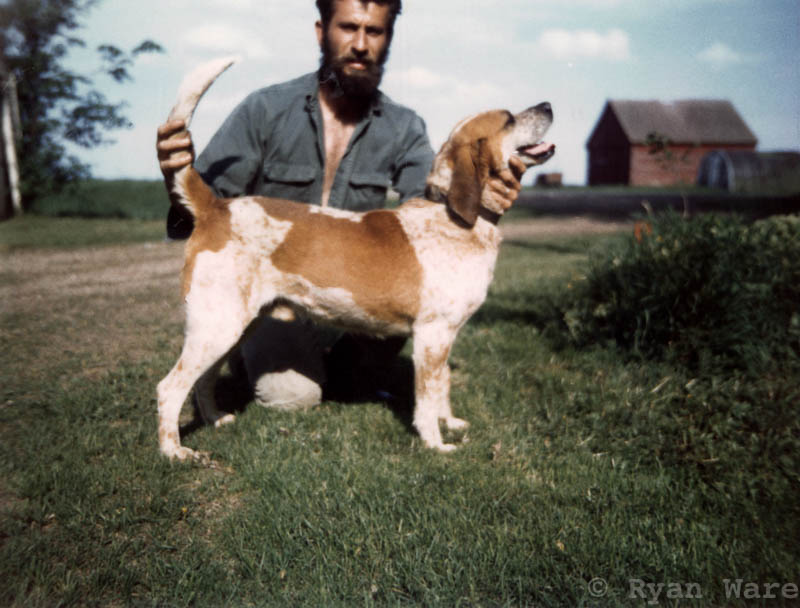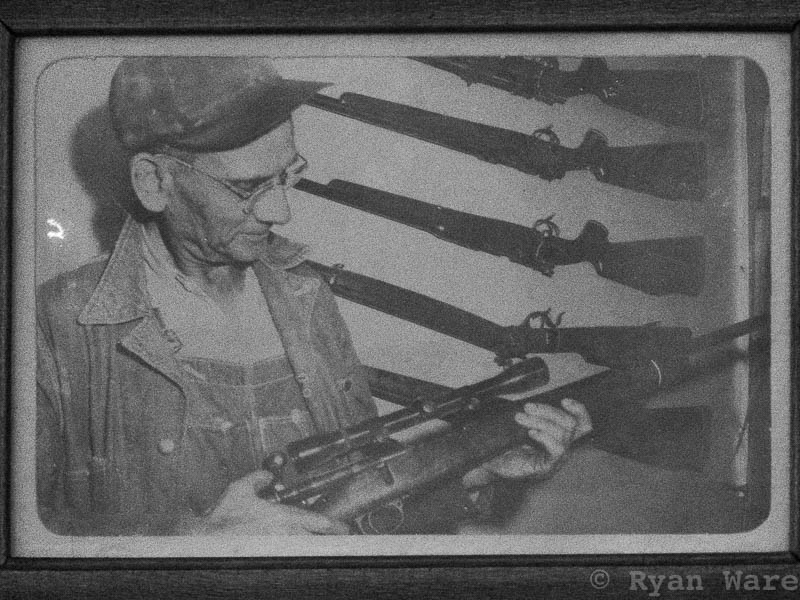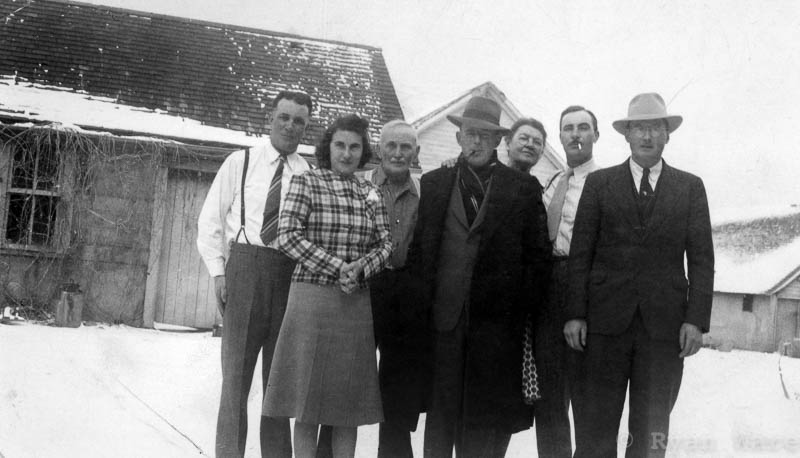Benchtalk
A History of Benchrest Shooting
HUNTER CLASS, The Infancy & The Adolescence
By: Bob Pease
Like the origin of an illegitimate unwanted child. Hunter Class Rifle shooting began somewhere around 1963 when several groups seemed almost simultaneously to develop interest in shooting center fire cartridges on a small bore type target for score from benchrest at 100 yards. Rifles. methods and rules varied as did the course of fire as well as the scoring of the targets but the basic idea was thus conceived. Largely through the efforts of PRECISION SHOOTING the rules became more similar with at least a semblance of balance occurring in the equipment.
During the late stages of that pregnancy. even though it appeared that triplets were a possibility, the exchange of information made possible in the pages of P.S. developed continuity. When it appeared that the illegitimate offspring called Hunter Class might achieve some degree of recognition plus considerable interest not less than three parental sources stepped forward to claim parenthood. It seemed that Midland, Texas, Chippewa, Ohio and Puget Sound, Washington all had considerable interest along similar lines and each had proposed recognition by the National Bench Rest Shooters Association as a benchrest class.

In 1966 the NBRSA adopted Hunter Class with an official Hunter Class target hastily created. Other than the appearance of their official Registered NBRSA emblem on each and every target NBRSA did little else to help their newly adopted offspring preferring instead to kick it out of the picture of State, Regional and National events as well as any prestigious recognition of World Records. Even the targets were a joke having been incorrectly printed. Under the coercion of NBRSA all existing incorrect targets had to be used up before any replacement was possible.
More and more Hunter Class matches were scheduled, new clubs were born and eventually new shooters came into the ranks of the Varmint Classes from their Hunter Class origins. Hunter Class provided a low cost. simple way for new people to learn whether or not the appeal of shooting from a bench motivated them. Those who did improved greatly in both knowledge as well as equipment and soon wanted to try thelr expertise In recognized legitimate matches.

Those to whom the game did not appeal left with very little loss of face or money outlaid for extremely sophisticated equipment having had, rifles that really could be used in varmint hunting as well as informal paper punching.
Original rules specified a Hunter Class Rifle .as one weighing not. over ten pounds complete with a scope that could not exceed 6X magnification. That rule remains unchanged to this day. Each rifle must have a magazine capable of handling two loaded rounds plus the bore size MUST be 6mm or greater. The cartridge must be able to contain powder equivalent to that of a .30-30 case later defined as 45.5 grains of water capacity.

One shot is fired at each of five record bulls eyes with a sixth bull on the target available for as many sighter shots as the shooter desires. A time limit of seven minutes per target with a total of five targets providing an aggregate POSSIBLE score of 250-25X's Which has never been achieved. Scaled up targets are used to repeat the entire match at 200 yards and 300 yards for those clubs having the facilities or expertise to stage such matches. Targets have been approved that today are identical from either of the existing governing bodies.
Waiting to see how their illegitimate adopted offspring grew over the formative years things remained status quo for the first four years. Shooters were enthralled with the new game, it's simplicity caused them to spend all their time upgrading cartridges, barrels, techniques, mounts, and chamberings in their passion to reach the coveted perfect 250 score on the CORRECTED official target. Most competition was on the local level with no thought to interregional match efforts. The .243 Win., 6mm Rem., and .308 Win. were the basic cartridges with Sierra bullets the almost universal choice. *

The only wildcat to gain much popularity was the 6-250 which, though minimal in meeting the capacity requirement, performed well when good bullets could be obtained, providing a low recoil small hole puncher. The .308 however provided the largest bullet imprint giving higher scoring possibilities -for those who could consistently handle it's back talk in a ten pound rifle.
In those days the NBRSA acted as a clearing house of approval, providing a list of legitimate cartridges that WOULD meet the minimum to avoid the necessity of actually checking cases at a match. The bullet availability in the late '60's left much to be desired even a few excursions into the .25, 6.5, .277 and 7mm bore sizes accomplished little with the total absence of any match quality bullet.
Struggling along., content with improvement or experimentation, little was .done toward. Any further recognition of the class on a National basis. In 1969 the devastating Spilt wlthin the NBRSA took place with the seceding Eastern portion forming the International Benchrest Shooters ( I.B.S.) as a sanctioning body in 1970.

The NBRSA retained the less populated western three fourths of the U.S. while the IBS added Canada to it's highly populated eastern block. Resulting membership stayed about equal within two years with over 50% of each body's members retaining dual membership. Well aware of the failings of the NBRSA, the I.B.S. began in their organizational meeting of 1970 by immediately recognizing and encouraging Hunter Class. Recognition was promised in their retained official publication, PRECISION SHOOTING Magazine with the direct result of the first "World" International Hunter Class match being held at Dauphin, PA on Sept. 18-19, 1971 and the results given excellent coverage in PRECISION SHOOTING Magazine.
This was followed in 1972 when the next official I.B.S. Hunter Class Nationals held Sept. 16-17, 1972 saw Guy Green of Hughsville, PA shoot the first perfect score in Hunter Class, a 250-16X effort that stood for some time as an official I.B.S. record. In the aftermath of this achievement, the glowing publicity caused Hunter Class to grow and expand by leaps and bounds swelling the ranks of the newly created I.B.S. much to the dismay of NBRSA officials.

Clubs that had long been reluctant to enter the complicated field of group shooting, installing high priced moving backer systems and scoring devices, found their members and treasuries much more adaptable to the minimal requirements of Hunter Class. The few dollars required for registration plus the privilege of purchasing official targets from either the NBRSA or the I.B.S. lent credence to their efforts and the conduct of their matches. Two target detail people with one official scorer really all the only requirement for even the largest of matches while the labor alone to run a well attended group shooting match in those precomputer days was sizeable. Hunter Class people actually divided the duties, being able to shoot even though scoring the 'off relay' targets. Expenses were minimal, shooter fees low and enticing, trophy and patch awards inexpensive still leaving money to club coffers after the match.
A period of complacency once again came into the Hunter Class game as quasi state and regional matches created interest. The I.B.S., in spite of World Record recognition, lacked the geographical area to claim anything more than local distinction for it's winners while the NBRSA affiliates lacked official sanction of World Records and Registration of matches, failing miserably to develop the potential growth offered by the new illegitimate offspring.

In the spring of 1973 after moving from western Pennsylvania where I had competed in both NBRSA and I.B.S'. competitions in addition to being a life member of both organizations, a chance conversation caused me to contact Tony Hidalgo of Englishtown, New Jersey and challenge his club to a Hunter Class match with the Central Texas Bench Rest Shooters Association of which I was an officer. From this chance challenge a league of Hunter Class shooters competing club by club in postal matches was born quickly developing into the Transcontinental Hunter Rifle League (TCL). It soon encompassed twenty four clubs with some 400+ annual competitors from both NBRSA and I.B.S. In fact no affiliation with either organization has ever been requirea-5Y the Transcontinental Hunter Rifle League (TCL) though rules and targets from one or the other must be followed in the conduct of TCL matches. Recently it became necessary to revise rules because of extreme differences between NBRSA and I.B.S. requirements. Fortunately these are currently on a trend of compatibility, and one set of rules will prevail.
Clubs in the Transcontinental Hunter Rifle League (TCL) exist from the tip of Maine to the desert reaches of Nevada and the bayous of Louisiana to the frozen north of Snow Shoe Alaska. With the Transcontinental Hunter Rifle League (TCL) having today expanded into two Conferences comprising some 44 clubs across the U.S. an excellent geographical representation of Hunter Class now exists. With this rapid expansion of interest, recognition by NBRSA was virtuallyforced by the threat of a separate third organization finally action was forthcoming.

In the winter of 1976 Walt Berger, then President of NBRSA, contacted me, as a result of the hue and cry, inviting me to come to the 1976 National NBRSA meetings in Tulsa, OK to present a plea for Hunter Class. Fearing that my own impassioned pleas were only to be heard then dismissed I conceived the idea of a Nationwide poll of Hunter Class shooters seeking additional backup. I felt that the illegitimate origin of Hunter Class in which I had been privileged to participate had now grown to adulthood, even facing a court martial that could affect it's entire career. only a maximum effort could save it. Fortunately the pollsters backed me up. Briefly summarized, some 160 replies indicated that 100% were in favor of Registered matches, 99% favored recognition of NBRSA World Records and 98% wanted NBRSA Hunter Nationals.
When the appointed date came I arrived in Tulsa armed with the results of the poll, frankly geared for a fight. The meeting turned into a friendly re-acquaintance with many of my former eastern shooting friends and l.mmediate acceptance of two of my three proposals. National NBRSA Hunter Class matches were not to be however.
Beginning in 1977 World Records and Registered matches would exist in NBRSA. Punishment for my part in all of this required acceptance of Hunter Class Chairman NBRSA with the task of consolidating rules, establishing proper but simple measuring devices to score targets and the acquisition of certified 10 pound weights for each Regional NBRSA Director prior to the beginning of the 1977 season. This was duly accomplished, then approved by the Hunter Class Committee NBRSA which I asked to have appointed and which comprised some of the most experienced, knowledgeable Hunter Class shooters there were. Eleven years after the illegitimate birth the errant child finally became adopted and legitimatized.

Another cycle of dominance began. With the advent of Registered Hunter Class matches shooters were keen to compete while travelling to the Registered matches fostered exchanges of information plus increased competition both in equipment and among the participants. The NBRSA Directors had extracted a promise from me that there would be no effort to hold National Hunter Class matches in exchange for the World Records and Registration. Though the two concessions certainly sparked interest the remaining limitation on achievement still hung like a cloud over all our advancement of the class.
It had further been decreed that there would be no progressive transfer of World Records throughout 1977 but rather all high scoring targets and data would be retained until the end of the year at which time the 100 yard, 200 yard and Grand Aggregate World Records would be announced by the NBRSA. On December 29, 1977 Jesse Corder, then NBRSA Measuring Committee
Chairman reported that the 100 yard NBRSA Hunter Class World Record had been set by Francis Broussard of Lafayette, LA on July 10, 1977 with a perfect 250-15X score fired on the Lafayette range. Later in '77 Broussard also set the 200 yard NBRSA Hunter Class World Record with a 246-13X score which combined with an excellent 100 yard score that day gave him the NBRSA Hunter Class Grand Aggregate World Record with a combined score of 494-19X. This set the goals -off went the rest of the pack knowing what they had to beat.

Meanwhile on the I.B.S. Hunter Class front all was not rosy. Interest and participation seemed to be falling off in direct proportion to the gains being shown in the NBRSA areas. In an effort to re-kindle the once popular Hunter Class matches the I.B.S. in a moment of weakening wisdom ruled to accept all of the here-to-for minimum cartridges and calibers in Registered I.B.S. Hunter Class events. The purported objective -to stimulate the participation by wives and youngsters of the shooters who would then be able to shoot the light recoil calibers and cartridges.

Since it was already obvious that wives or youngsters had not participated in large numbers in the Varmint Classes where small calibers had always prevailed one wonders if a few missguided I.B.S. Hunter Class people had not merely diluted the Class in an effort to achieve higher scores than their contemporaries in the NBRSA.
Among most I.B.S. Hunter Class shooters however common sense prevailed -the following two years the I.B.S. National Hunter Class Championship was won with a .308 cartridge; both Roger Gower and Tony Hidalgo disdaining any help from below minimum cartridges. This trend continued as only once in the six years of minimum cartridge competition did a sub-capacity case win the Nationals. The original rules were restored in 1984 and the 45.5 gr. Water capacity case once again legitimatizes all of Hunter Class.

The NBRSA not to be outdone in the lapses of wisdom department, made one sojourn into electronic triggers which was rapidly rescinded but in 1981 they removed the operating safety requirement thus opening the door to the use of 2 ounce triggers. This because some veteran shooters firing in all classes of competition had trouble switching to the heavy triggers mandated by the safety requirement. Since I personally knew of at least five Hunter Class shooters who used their rifle with a light trigger in competition and then switched to a normal trigger during the deer season I could find little fault with the final ruling as it exists today.

Sometime during 1978 Marcy Lyons, on my suggestion, had been named to replace me as NBRSA Hunter Class Chairman thus negating my promises to the NBRSA not to promote National Championship matches. The clamor had already begun among the Hunter Class shooters for national recognition of their class and through the next eighteen months Marcy's dedication and lobbying prevailed. At the NBRSA National meeting in 1979 the hierarchy agreed to permit the first ever NBRSA Hunter Class Nationals beginning in 1980. Finally, after 15 years of total to partial illegitimacy, Hunter Class became legitimate!

Now in 1985 Hunter Class flourishes in both the I.B.S. and the NBRSA areas of the country while there are ongoing efforts in both these organization being directed toward a common meeting ground for an eventual merger. Consolidating the rules, targets, calibers and scoring within the Hunter Class will make this easier. True comparisons can be made between shooters firing in Maine, Alaska and Texas or more importantly when these shooters travel to a National Hunter Class event, be it I.B.S. or NBRSA sponsored they need have no fear of their equipment failing to meet the entry requirements.
Hunter Class, whether informal or registered, still provides the most simple approach to the sport of shooting from bench rest. Hunter Class provides a competition battleground -if you will, for dedicated rifleman to improve their skills and knowledge with a rifle that can still be used in the field and one that has sufficient cartridge and caliber size to kill a whitetail deer with a scope of the proper magnification to make it possible. Such cannot be said about any other class of bench rest. .

Perhaps most important is the opportunity it give a new shooter to try benchrest without the tremendous outlay for sophisticated equipment. It is from the Hunter Class that new shooters, clubs and ranges are born. It is also the only form of bench rest shooting where the participant must hit his specific point of aim in order to score well. That, after all, is what rifle shooting is all about.
If ever a child of creation seemed destined for survival in spite of it's heritage and up-bringing, that child is the Hunter Class of rifle shooting for score. Try it! It is a challenge and fun!!